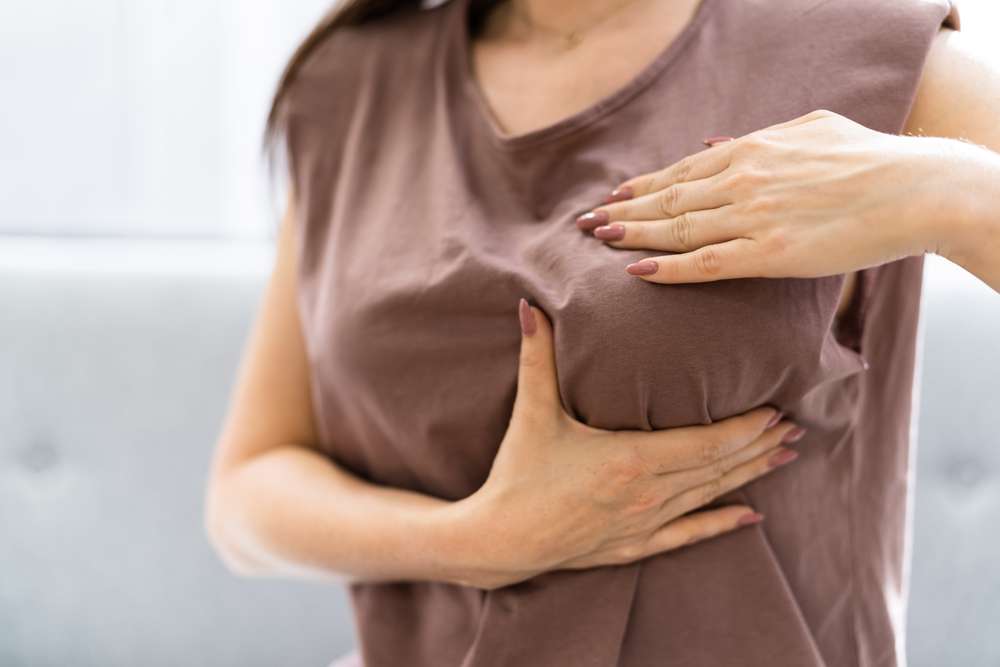7 Subtle Early Warnings Of Breast Cancer
Detecting breast cancer in its early stages significantly improves treatment outcomes and survival rates. While most people are familiar with obvious symptoms like lumps, several subtle warning signs often go unnoticed. Recognizing these early indicators can lead to timely medical intervention when treatment options are most effective and less invasive.

Breast cancer remains one of the most common cancers affecting women worldwide, though it can also occur in men. Early detection plays a crucial role in successful treatment outcomes. While most people associate breast cancer with noticeable lumps, several subtle warning signs may appear before more obvious symptoms develop. Understanding these early indicators can potentially save lives through prompt medical attention and intervention.
Skin Changes and Dimpling
One of the earliest and often overlooked signs of breast cancer is changes to the skin texture of the breast. This may manifest as dimpling or puckering that resembles the texture of an orange peel, medically known as peau d’orange. This occurs when cancer cells block lymph vessels in the skin, causing fluid buildup and tissue changes. The skin might appear thickened, with noticeable indentations or an overall change in texture. These changes typically don’t cause pain, which is why they can easily go unnoticed during routine self-examinations. Any persistent skin changes warrant medical evaluation, especially when they affect only one breast.
Nipple Discharge or Changes
Unusual nipple discharge, particularly if it occurs spontaneously without squeezing, can be an early warning sign of breast cancer. While discharge can result from various non-cancerous conditions, discharge that is clear, bloody, or contains pus should be evaluated promptly. Additionally, changes to the nipple itself, such as inversion (turning inward), flattening, or a change in direction may indicate underlying issues. Some individuals might notice scaling, crusting, or redness around the nipple area, which could be a symptom of Paget’s disease of the breast, a rare form of breast cancer that begins in the nipple. These changes often develop gradually, making them easy to dismiss or attribute to normal aging.
Unexplained Breast Pain or Tenderness
While breast pain is commonly associated with hormonal changes or benign conditions, persistent or recurring pain in a specific area of the breast could signal something more serious. Cancer-related breast pain typically affects only one breast and remains localized to a specific area rather than generalized tenderness. The pain may be described as a burning sensation, tightness, or sharp stabbing discomfort that doesn’t correlate with the menstrual cycle. Though most breast cancers don’t cause pain in their early stages, some types, particularly inflammatory breast cancer, may cause tenderness along with redness and swelling. Any unexplained breast pain lasting more than a few weeks deserves medical attention.
Breast Asymmetry or Shape Changes
Breasts naturally have some degree of asymmetry, but sudden or progressive changes in the size, shape, or appearance of one breast compared to the other could indicate breast cancer. This might present as one breast appearing larger, lower, or differently shaped than before. Some individuals notice subtle contour changes, such as a portion of the breast that appears swollen or distorted. These changes occur because cancer cells can cause structural alterations in breast tissue, pulling or distorting the normal architecture of the breast. Regular visual examination in front of a mirror with arms at sides, raised overhead, and hands on hips can help detect these subtle changes early.
Swollen Lymph Nodes
Enlarged lymph nodes in the armpit or around the collarbone area can be an early indicator of breast cancer, sometimes appearing before any noticeable changes in the breast itself. These swollen nodes typically don’t cause pain but may feel like small, firm lumps under the skin. Breast cancer can spread to nearby lymph nodes even in early stages, causing them to enlarge as they attempt to filter cancer cells. While lymph node swelling commonly occurs with infections or inflammation, persistent enlargement without other illness symptoms warrants evaluation. Some individuals might notice difficulty moving their arm or experience a feeling of heaviness in the affected side.
Unusual Breast Warmth or Redness
Unexplained warmth, redness, or a feeling of heat in breast tissue can signal inflammatory breast cancer, an aggressive form that often doesn’t present with the typical lump. The affected breast may appear red, inflamed, and feel unusually warm to the touch, sometimes resembling an infection. These symptoms result from cancer cells blocking lymph vessels in the skin, causing inflammation and increased blood flow to the area. Unlike an infection, these symptoms typically don’t improve with antibiotics and may progressively worsen. The redness might appear as a patch or cover a larger area of the breast, often accompanied by skin thickening or an orange-peel texture.
Persistent Upper Back, Shoulder, or Neck Pain
Sometimes breast cancer first manifests as pain in the upper back, shoulders, or neck rather than in the breast itself. This occurs when tumors press on nerves in the breast that radiate pain to these areas. The discomfort typically affects one side of the body and persists despite rest or pain relievers. Some individuals describe it as a deep, aching sensation that doesn’t improve with typical treatments for muscle pain. This symptom is particularly deceptive because most people attribute such pain to muscle strain, poor posture, or everyday stress rather than considering it a potential breast cancer warning sign.
This article is for informational purposes only and should not be considered medical advice. Please consult a qualified healthcare professional for personalized guidance and treatment.
Conclusion
Recognizing subtle early warnings of breast cancer can lead to earlier diagnosis and more successful treatment outcomes. While these symptoms don’t definitively indicate cancer, they should prompt a medical evaluation, especially when they persist or worsen over time. Regular breast self-examinations, clinical breast exams, and appropriate screening mammograms based on age and risk factors remain essential tools for early detection. Remember that breast cancer is highly treatable when caught early, making awareness of these subtle warning signs a potentially life-saving knowledge.




